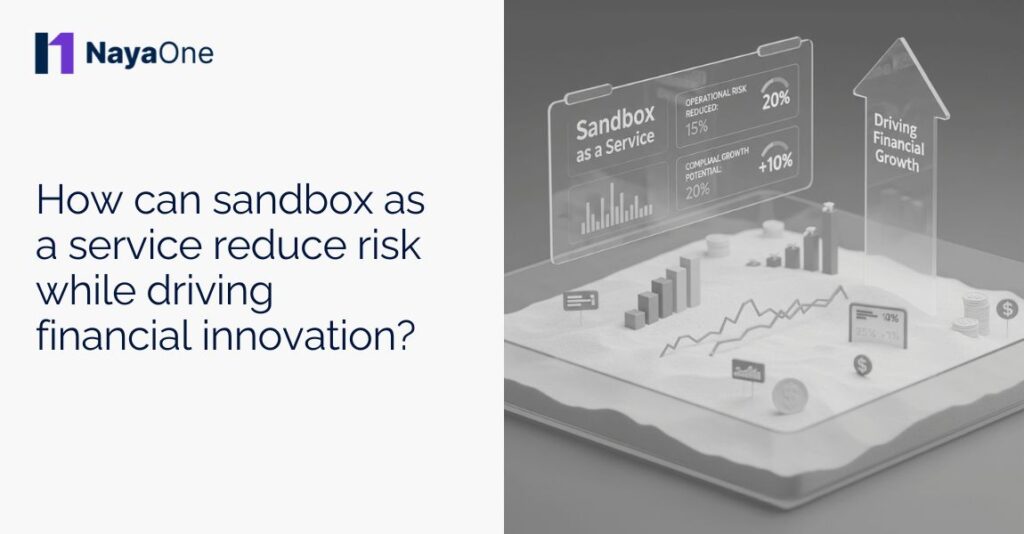The world of finance is buzzing with innovation, yet it’s no secret that risks are part of the journey. Launching a new product or feature without proper testing can lead to security breaches, compliance headaches, or unhappy customers. That is where sandbox as a service steps in as a friendly sidekick.
Think of it as a safe rehearsal stage for your financial ideas. Firms can test applications, payment systems, or lending solutions in a controlled environment that mirrors the real world, but without exposing sensitive data or live accounts. It’s like having a mini lab for your business where mistakes are learning opportunities rather than disasters.
According to the UK’s Financial Conduct Authority, 92% of firms that have used the Regulatory Sandbox go on to become successfully authorised. This statistic underscores the effectiveness of sandbox environments in fostering innovation while ensuring compliance and security.
How risky is financial innovation?
Financial services thrive on trust, and even small errors can have huge consequences. Imagine releasing a new mobile banking feature only to discover a bug that exposes customer data. For smaller fintechs, the fallout could be catastrophic, including lost customers, reputational damage, and financial penalties. For traditional banks, it could mean regulatory fines, customer churn, and a hit to long-term credibility.
According to IBM’s 2025 Cost of a Data Breach Report, UK organisations using AI and automation extensively across their security operations saw data breach costs drop to £3.11 million per year, significantly lower than the £3.78 million average cost for those not using these technologies.
Risks come in many forms:
- Compliance pitfalls: Failing regulatory standards can be extremely costly and delay product launches. It isn’t just about fines; non-compliance can mean reputational damage that lasts for years.
- Cybersecurity threats: Handling sensitive financial data makes firms prime targets for hackers. Even a small vulnerability could escalate into a major breach.
- Customer trust erosion: One poorly tested feature or glitch can undo months of careful brand building, and regaining trust can take significant time and resources.
Given these stakes, the ability to experiment safely is essential. That’s where controlled testing environments, like sandbox platforms, come into play. They allow firms to innovate without exposing customers or systems to unnecessary risk, acting as a safety net for creativity.
What is sandbox as a service, and how does it work?
At its core, sandbox as a service is a cloud-based environment that lets businesses safely test new financial solutions. Unlike live systems, it allows experimentation without risking real money or sensitive customer data. It’s like having a mini rehearsal stage for your innovations; mistakes can happen, but they won’t harm the business or its clients.
Here’s what a sandbox typically includes:
- Simulated data: Teams can test applications using synthetic or anonymised information, keeping live accounts completely safe. This means scenarios can be tried repeatedly without fear of error.
- Regulatory guidance: Many platforms include compliance oversight, helping firms spot gaps or potential breaches before they become issues. This ensures that products are tested in line with regulatory expectations.
- Integration testing: Multiple stakeholders can ensure that new applications work seamlessly with existing systems, reducing downtime when solutions go live.
- Scalability: Products can be rolled out gradually after passing tests, ensuring smooth deployment and fewer surprises.
Think of a sandbox as a playground where fintech teams can experiment, innovate confidently, and learn quickly, all while keeping the real world secure. It’s a space where trial and error is part of the learning process, not a threat to business operations.
How does sandboxing reduce risk?
The biggest benefit of sandbox platforms is safety. Moving testing away from live environments means errors are contained, security flaws are detected early, and product refinements can happen without jeopardising customer trust.
Key advantages include:
- Data protection: Testing with synthetic or anonymised data ensures real information remains secure, protecting customers and the business.
- Compliance support: Early visibility helps avoid breaches, regulatory fines, and operational setbacks. Firms can demonstrate due diligence and proactive risk management.
- Affordable experimentation: Multiple iterations can be tested quickly and cheaply, without the cost of building dedicated on-premise test environments.
- System compatibility: Ensures that new applications integrate smoothly with existing technology, reducing technical headaches and unexpected downtime.
With risks contained, businesses can try new ideas with more confidence. One mistake in a sandbox doesn’t jeopardise operations, customer relationships, or brand reputation, meaning teams can focus on innovation without fear.
How does sandboxing drive innovation in finance?
Reducing risk is one thing, but innovation is the real goal. Sandboxes give teams freedom to experiment, which accelerates development and encourages creativity.
Here’s how they help:
- Faster testing cycles: Trial and error can happen in days rather than months, helping teams iterate quickly and bring products to market faster.
- Support for startups: Smaller fintechs gain access to the same safe testing platforms as large banks, levelling the playing field.
- Collaboration opportunities: Banks, fintechs, and regulators can test together in shared environments, sparking new ideas and partnerships.
- Global readiness: Many platforms support multiple regulatory frameworks, allowing firms to prepare solutions for international expansion.
By removing fear and limiting potential risks, sandboxes allow businesses to innovate boldly while maintaining security and compliance, a rare combination in finance. They create an environment where creative solutions can flourish without exposing firms or their customers to unnecessary danger.
Can sandbox as a service transform growth for financial firms?
Safe experimentation isn’t just about avoiding problems; it’s also about enabling growth. Businesses that embrace digital sandboxes can launch new features faster, test payment systems more thoroughly, and explore fintech solutions with confidence. Smaller firms especially benefit. With lower infrastructure costs and quicker development cycles, they can compete with established institutions without taking on huge risks. Even long-standing banks gain agility, allowing them to stay ahead in a competitive market.
By using a secure environment for testing, firms build both confidence and credibility. Customers notice when systems work smoothly, compliance is seamless, and innovations arrive without disruption. These sandbox platforms aren’t just tech tools; they act like a co-pilot for smart growth, helping teams experiment boldly while keeping operations safe.
Whether you are a startup or a legacy bank, adopting sandbox as a service provides a structured, risk-managed approach to innovation. Firms that neglect safe testing environments risk slower growth, higher costs, and compliance headaches. Those that embrace sandbox platforms gain speed, flexibility, and the freedom to innovate with confidence. In other words, these tools turn potential risk into opportunity, making safe, responsible innovation not just possible but essential for any financial firm aiming to grow and stay competitive.





